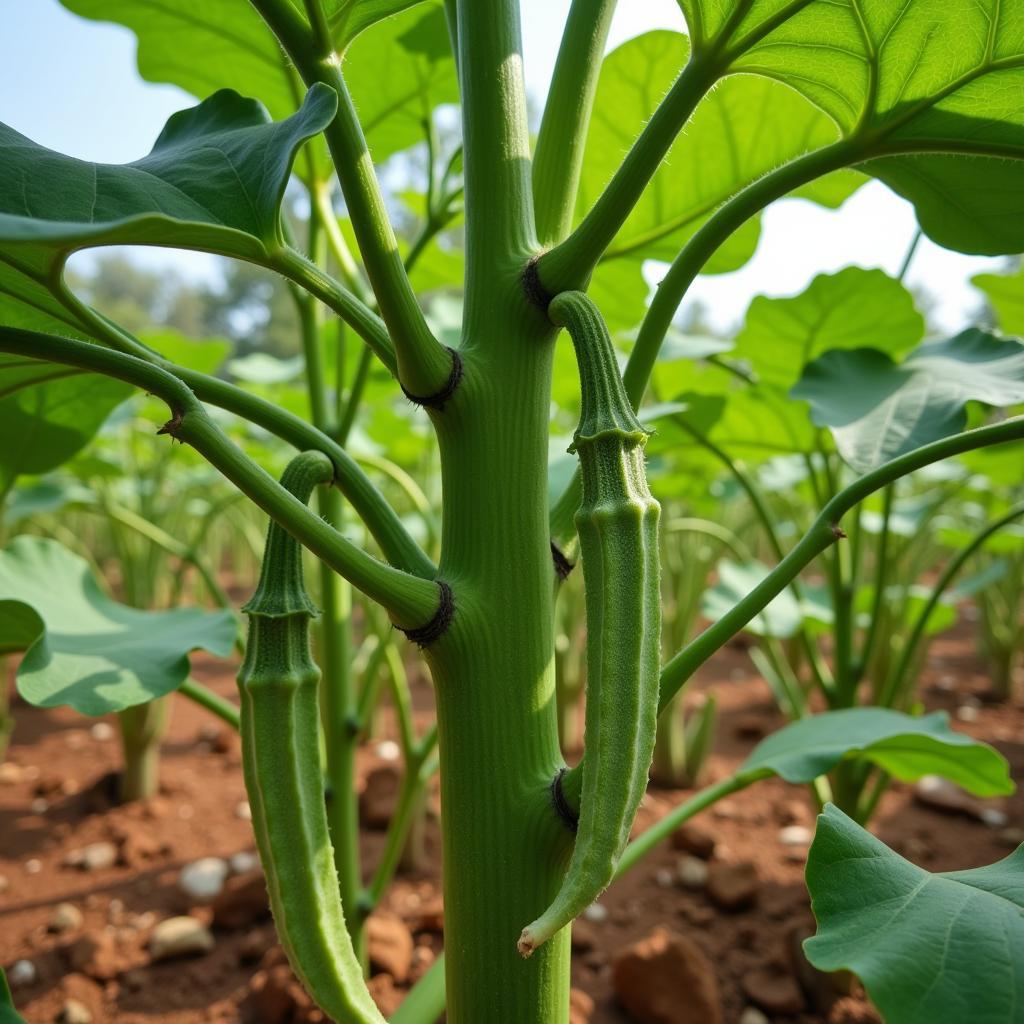Unlocking the Secrets of African Ladies Finger: History, Uses, and More
The African Ladies Finger, also known as okra or gumbo, is a versatile vegetable that holds a special place in the culinary traditions of many African countries. Far more than just an ingredient, this pod-like vegetable represents a rich history and cultural significance that has been passed down through generations.
 okra plant in african garden
okra plant in african garden
A Journey Through Time: Origins and History
The exact origins of the African ladies finger are debated, but most evidence points to its domestication in Ethiopia and South Sudan. From there, it spread throughout Africa, becoming a staple crop in regions with warm climates. Ancient Egyptians cultivated okra as far back as the 12th century BC, valuing it not only for its culinary uses but also for its medicinal properties.
More Than Just a Vegetable: Cultural Significance
Across the African continent, the African ladies finger plays a significant role in various cultural practices and beliefs. In some communities, it’s incorporated into traditional dishes prepared for special occasions like weddings and festivals. The plant’s mucilaginous texture, which creates a thick, stew-like consistency, makes it ideal for these communal meals.
Culinary Delights: Exploring the Versatility of African Ladies Finger
The African ladies finger’s culinary versatility shines through in a diverse range of dishes across the continent. From simple preparations to elaborate recipes, okra adds a unique texture and flavor.
- West Africa: In countries like Nigeria and Ghana, okra features prominently in soups and stews, often combined with fish, meat, or vegetables.
- East Africa: Kenyan cuisine often features okra in vegetable stews, seasoned with aromatic spices and served with staples like ugali (maize porridge).
- North Africa: Egyptian and Moroccan dishes often utilize okra in tagines, where it adds a delightful thickness to slow-cooked meat and vegetable stews.
Nutritional Powerhouse: Health Benefits
Beyond its culinary uses, the African ladies finger is a nutritional powerhouse. It is an excellent source of:
- Dietary Fiber: Promotes digestive health and helps regulate blood sugar levels.
- Vitamins: Rich in Vitamin C, Vitamin K, and folate, which are essential for various bodily functions.
- Minerals: Provides a good source of magnesium, potassium, and calcium, all crucial for maintaining overall health.
Cultivating Your Own: Tips for Growing African Ladies Finger
Growing your own African ladies finger is a rewarding experience. Here are some tips:
- Climate: Okra thrives in warm temperatures and requires plenty of sunlight.
- Soil: Well-drained soil rich in organic matter is ideal.
- Watering: Consistent watering is crucial, especially during dry periods.
Conclusion
From its ancient origins to its modern-day relevance, the African ladies finger continues to be a cherished vegetable with a rich history and cultural significance. Whether enjoyed in a hearty stew, incorporated into a traditional remedy, or grown in a backyard garden, this versatile plant offers a unique connection to the heart of African cuisine and culture.

